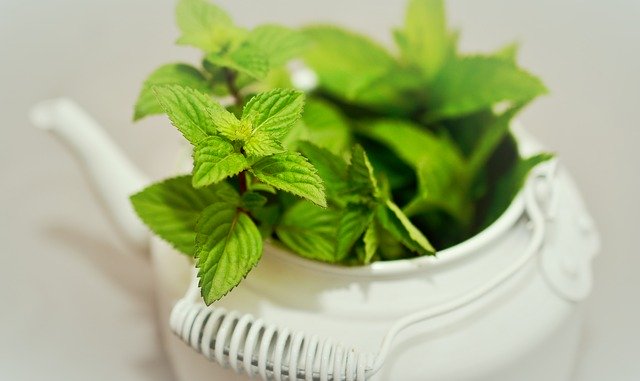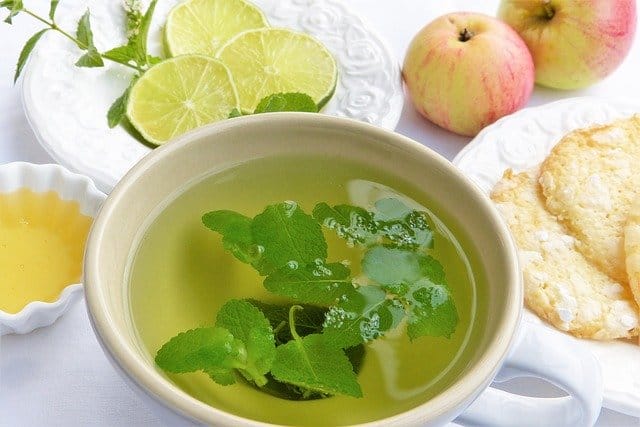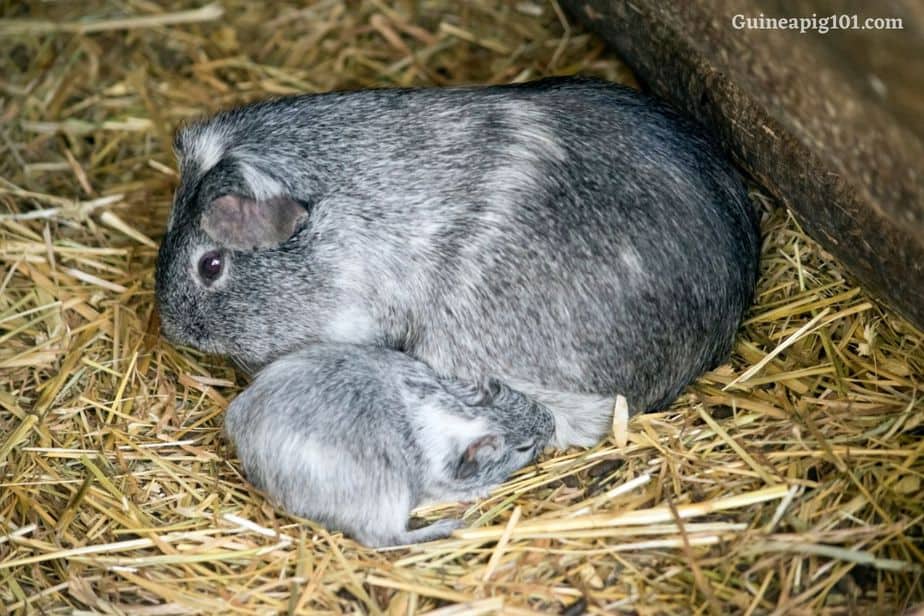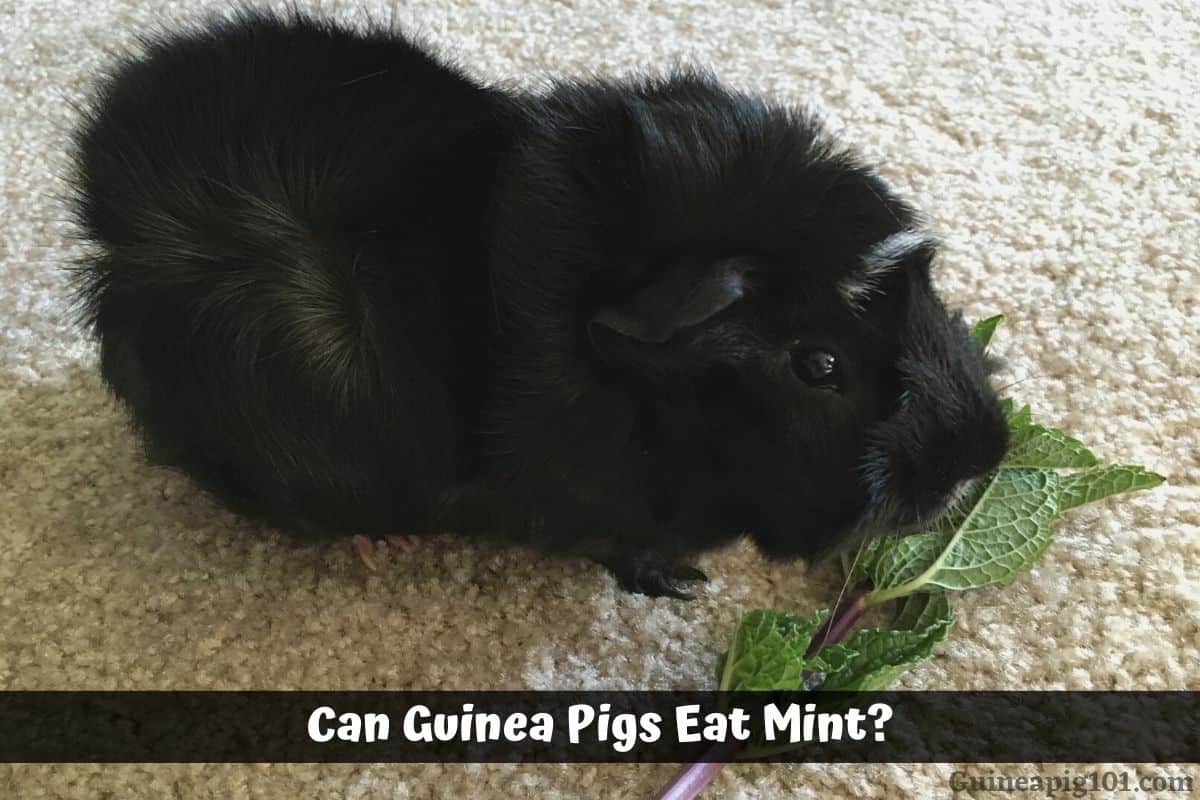Mints are aromatic herbs that are popular all over the world. It has been an essential part of the human diet for many years. This plant has shown a vital application in the medical field as well. So, it is very obvious for the guinea pigs owner to wonder can their guinea pigs eat mint? Is it safe for them?
Guinea pigs can eat mints along with its stem, flowers, and leaves. Avoid serving the roots as they do no possess any nutritional value. When feeding mint to guinea pigs, it is recommended only to offer them a moderate amount to avoid health issues. Mix it with other veggies to create a healthy diet.
Mint alone cannot fulfill the requirements of our guinea pigs. It is essential to mix with other vegetables rich in Vitamin C to get a healthy and balanced diet.
Also remember that not all variant of mint is safe for our guinea pigs. To learn more about it keep reading till the end.
Do guinea pigs like mint plants?
The choice of food is a personal preference of a guinea pig. While some enjoy a particular food, others despise it.
Some guinea pigs do not like the smell or find the taste too strong.
One can serve them mint leaves, stem, and flowers as guinea pigs generally love to explore new foods.
What kinds of mint are toxic to guinea pigs?
Most plants of the mint family are relatively safe for our guinea pigs. However, pennyroyal is one of the plants that are toxic to our guinea pigs.
Pennyroyal is of two types, the European pennyroyal and the American pennyroyal.
American pennyroyal, Mentha pulegium, also known as false pennyroyal and mock pennyroyal.
On the other hand, The European pennyroyal, Mentha pulegium, also called pudding grass, mosquito plant, and squaw mint.
Both the plants have got the same uses but are equally toxic for our guinea plants. So, avoid them altogether.
If your are unsure what those mint looks like, here is how you can identify them.
Pennyroyal Identification
The flower types mostly identify the pennyroyal. The European pennyroyal exhibits strong fragrance similar to spearmint.
They are lilac in color and has orbicular leaves.
On the other hand, American pennyroyal is blue with more slender and erect leaves.
Both are members of a mint family producing minty odor when crushed.
Healthy mint plants for guinea pigs

Here are some plants from the mint family that are good for our guinea pigs:
- Lemon Balm: Lemon balm ( Melissa Officinalis), also known as Beebalm, is an herb in the mint family. They help to ease stress and can also help in treating gastrointestinal problems.
- Peppermint: Peppermint is also known as( Mentha balsamea wild), is a hybrid mint. These are initially from Europe, and today is cultivated all over the world. Peppermint is found in the form of oils, leaves, and capsules. They usually grow from 12 to 35 inches tall. That helps in treating diarrhea, indigestion, and anxiety in our guinea pigs.
- Rosemary: Rosemary is a herb known explicitly for its aromatic smell. The antioxidant present in rosemary helps in boosting overall immunity in guinea pigs. Moreover, these herbs also help in preventing scurvy and promoting healthy blood in guinea pigs.
- Lavender: Lavender is an herb commonly used in fragrance and helps in purifying the skin. For guinea pigs, lavenders have been known to give a calming effect by its smell, help prevent scurvy, and maintain a healthy weight as this flower is low in calories and fat.
Can guinea pigs eat mint leaves?
Yes, guinea pigs can eat mint leaves. Mint leaves are highly nutritious and are the most flavored and aromatic part of the mint plant. For guinea pigs, mint leaves are healthy as it provides essential nutrients.
Mint leaves are also used as medicinal properties. These leaves are low on calories and contain different Vitamins A, C, which helps boost immunity and improves healthy skin.
Can guinea pigs eat mint stems?
Mint stems have the same minty flavor as the mint leaves.
The stems are almost close to the leaves and shoots are the softest part of the stem.
One can chop these stems entirely and can feed guinea pigs a small amount of it.
Can guinea pigs eat mint flowers?
Yes, guinea pigs can eat mint flowers. Mint flowers can be of purple, pink, or white, depending on their variety.
These flowers have the same aromatic smell and lovely flavor as leaves of the mint plant.
Moreover, this will also give a different taste to your guinea pigs. Hence, mint flowers are safe for guinea pigs if fed in moderation.
Can guinea pigs eat mint root?
No, guinea pigs cannot eat mint roots. The roots of the mint plant do not carry any nutritional value in it.
It is better to serve them with their first meals like fresh fruits, leafy vegetables, and water, which are healthy and safe.
Can you give guinea pigs mint tea?

Tea is a risky beverage for guinea pigs, as they are not organic and natural. Some tea contains caffeine, which is not suitable for guinea pigs.
You can only feed herbal tea to your guinea pigs.
They are generally mixed with artificial colors and sweeteners, which are harmful to our pets.
Feeding mint tea might be some pigs who like the taste of mint and can have it while some don’t. It depends on their preferences.
If you are giving them tea, try to look for their reaction and feed them accordingly.
In case you find any negative impact of serving mint tea, remove them immediately from their diet.
Mint Benefits
Mints are not only refreshing in taste, but they also have many benefits. Let us see some of the health benefits that guinea pigs acquire from mint:

- Smoothen digestion: Mint has antibacterial and antiseptic properties that can help deal with indigestion and upset stomach. That can help in making digestion easier. In guinea pigs, mint reduces gastrointestinal complications and makes their digestion smooth.
- Mint helps in improving brain function: It is seen that mint has some ability to boost the performance of the brain function. It increases retention and alertness power. The brain controls most, if not all, of the process in the body. A healthy mind can lead to a healthy life for your guinea pigs.
- Helps prevent constipation: The dietary fibers present in mint are known for their ability to promote bowel movements. Providing mint, rich in fiber, can help your guinea pigs prevent constipation and help pass stool smoothly.
- Helps in boosting immunity: Nutrients play a vital role in guinea pigs. Due to the presence of many nutrients in the plant, it can also help your guinea pigs to boost their immunity.
- Helps in boosting eyesight: The presence of vitamin A in the mint plant adds sufficient nutrients that ultimately helps in maintaining good vision. It can help in advancing eyesight and also helps in preventing any infections that might affect the eye.
Mint As A Remedy
Apart from its health benefits, mint can be used as a remedy to treat illnesses. That has been used for centuries in traditional medicine.
Many herbalists even today recommends using this herb in a different part of the world.
Mint can aid in different ailments in our guinea pigs as well. Let us come across some ways in which mint can be used as a medicine for guinea pigs:
- Aids in digestion: Mint helps to deal with stomach upset and disorders. It also reduces the chances of gastrointestinal complications in the guinea pig’s bodies.
- Loose tools: Mint can help guinea pigs who have loose or watery stools.
- Helps improve the brain’s performance: The nutrients and minerals present in the mint plant help improve the brain’s performance.
- Calming stress: The lavender plant and lemon balm have been known to reduce stress, besides being antiviral and antibacterial.
Can Nursing guinea pigs Have Mint?

Mint plants should not be given to guinea pigs who are nursing. Mint can dry up guinea pig’s milk.
They should have a healthy balanced diet to meet the demands of nursing.
Nursing guinea pigs should not be fed mint and other herbs from the mint family.
Feeding mint leaves to nursing pigs can affect them adversely. Mint has milk drying properties.
Also, mint leaves lack vitamin, which is very important for guinea pigs during their nursing stage.
However, on the other hand, mint leaves can help prevent several illnesses like chronic mastitis during the weaning time of guinea pigs.
How to feed guinea pigs mint
Fresh mint is safe to feed to your guinea pigs. As we know, not all the plants are prepared in the same way.
Let us read some ways to make mint healthier and safe :
- Wash mint: One must wash the mint bought from the market so that chemicals are removed from them. Washing them thoroughly underwater will make mints safe for your guinea pigs.
- Chopping it: Chop the mint leaves into medium pieces in small pieces and sprinkle over the rest of the food. That will ensure that flavor isn’t too much for guinea pigs.
- Mix it up: Try to mix mint leaves with different vegetables and hay, as feeding raw mint can be too strong in taste for guinea pigs.
- Serve: Your mint is ready to serve. Take a well-washed plate and serve guinea pigs properly. Lastly, remove the leftovers from their place.
My Guinea pig ate too much mint

Mint leaves are safe for guinea pigs, but only when fed with a small amount and not as a significant part of their diet.
Feeding your guinea pig with an excessive amount of mint can lead to allergic reactions and discomfort.
Instead, they should be fed with Vitamin C rich veggies like parsley, broccoli, spinach, bell peppers, Cilantro, etc.
Some common symptoms to identify if your guinea pigs have overeaten mint:
- Allergic reaction
- Strained bowel movements
- Irregular patterns of appetite and fecal discharge.
In case your guinea pigs bear such symptoms, it is best to avoid feeding it with mint leaves and visit a qualified vet.
Sources: Nutrition in mint, Benefits of mint, Diet Composition of Guinea Pigs, Dietary Vitamin C, and Vitamin E needs of Guinea Pig, Vitamin C need of our guinea-pig
Similar Posts:
- Can Guinea Pigs Eat Dandelions? (Hazards, Serving Size & More)
- Why Can’t Guinea Pigs Eat Potatoes? (Hazards, Chips, Cooked & More)
- Can Guinea Pigs Eat Dill? (Hazards, Serving Size & More)
- What Fruits Can Guinea Pigs Eat? (Fruit List, Serving Size & More)
- Can Guinea Pigs Eat Watercress? (Hazards, Serving Size & More)
